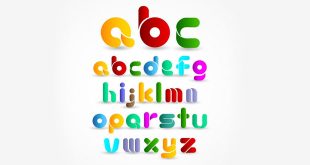Difference Between Colon & Semicolon
Semicolon Usage
Semicolons are used commonly in English. It is a linking punctuation between two closely related sentences. They are so closely related that the full stop is often skipped for the semicolon. The gist of the main uses of semicolons is given below.
- It acts as a linking punctuation between two complete sentences which are not connected by a conjunction. E.g. I’m going to the stationary shop; I need to buy a sketch book.
- It introduces a sense of humor, joke and ironical literature between the two sentences. Hence this marks relation between the two sentences. E.g. Luke drives a Mercedes; John drives a Santro Zing.
- When using semicolons as connector, words ‘however’, ‘moreover’, ‘that is’ (i.e.), ‘for example’ (or e.g.) and ‘therefore’ can be used. It is a thumb rule. E.g. Ravi is an Indian; however, he lives in the US.
- Semicolons are used in explanations where many commas are already present E.g. My air trip will take me to the many places across the globe; Delhi, the heart of India; Egypt, the land of pyramids; Venice, the land on water; Hong Kong, Thailand, Malaysia, the shopping destinations; New York, Toronto, Stockholm, the new-age world; and Pune.
Colon Usage
The colon is an important punctuation. It introduces the reader to sentences. The presence of a colon hints towards something important being stated. After reading the sentence before the colon, the reader anticipates some amount of useful information. The gist of the major uses of colons is listed below.
- It is used to introduce an explanation or examples to the facts or ideas stated in the sentence before the colon. For e.g., “Writing is much more than mere arranging of words: it is an expression of the deeper voice within us” or “His main flaw is his downfall: egotism”.
- The colon is used to direct the reader to a list of things. E.g. A lot of vegetables are the same color: lettuce, peppers, snow peas and celery.
Colons are also used in salutation of business letters (Dear Mr Luke:_), in the heading of a business memos, letters (To:_, Subject/Title:_) and between the hour and minutes notation (6:15PM). Some other places where colons are used is in citation of works in literature, in between verses of Bible etc. E.g. Genesis 1:18-20 or Vol. 2:34.
Where The Confusion Arises
Although the principles of the two punctuation have been explained, to dissolve the confusion all the more it makes sense to contrast them with the help of examples.
Consider the following sentences:
Example #1
Lisa is upset. Gus is having a nervous breakdown.
These two sentences, separated by a full stop, don’t suggest any kind of connection but just inform the reader of two bad situations.
Lisa is upset; Gus is having a nervous breakdown.
When a semicolon is introduced, a particular relation arises between the two sentences. The two disjointed yet related thoughts are combined.
Explanation:
- The relation that can be inferred from the above sentence is that the reasons for Lisa being upset, and Gus going through a nervous breakdown are the same.
- Now, introducing a colon instead of a semicolon gives the sentences a different meaning.
- Lisa is upset: Gus is having a nervous breakdown.
- The introduction of the colon gives an explanation of the text before the colon. Hence, the above formation of sentences suggests that the reason Lisa is upset is because Gus is having a nervous breakdown.
- The difference that a colon or semicolon brings out is quite evident. Another example can be considered to make clear the different effect of the colon and semicolon.
Example #2
I have the answer. Mike’s solution doesn’t work.
These two sentences, separated by a full stop, do not imply anything. They just state two facts directed towards different problems. A sense of similarity or connectivity does not arise at all.
Now with a semicolon:
I have the answer; Mike’s solution doesn’t work.
After these two sentences are separated by a semicolon, a relation is introduced between the two independent clauses. The meaning that can be inferred is that Mike and I are working on the same problem.
I have the answer: Mike’s solution doesn’t work.
Finally, with a colon, the meaning that the sentence implies is that ‘the failure of Mike’s solution’ is the answer which has been obtained.
Understanding these examples helps bring out the differences between a colon and a semicolon. To summarize, a semicolon is used to join two sentences which would otherwise be joined by ‘and’, ‘or’, ‘but’, ‘yet’ or ‘while’. However, a colon is used to separate a general statement from the following specifics. Also, a semicolon cannot be used to introduce quotations or lists. So as you saw, these symbols can have different meanings on sentences and they are not interchangeable punctuation marks. They should hence be used to in a proper manner rather than arbitrarily or even interchangeably.
 Class Notes NCERT Solutions for CBSE Students
Class Notes NCERT Solutions for CBSE Students


